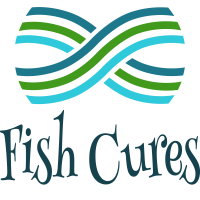 |
About Us |
|---|
Tetracycline
Tetracycline was very popular antibiotic in the early days of the aquarium hobby. It was once thought of as a miracle cure as it worked on a wide variety of bacterial ailments and some fungal issues. However, due to using when disease wasn’t present, resistance easily built to the point it stopped being effective and fish suffered. But once Oxytetracycline became available, it became the preferred choice.
As with any medication, it must be used wisely. Tetracycline, when not used properly, can lead to anemia, organ failure, and even death. Tetracycline should never be used on fish that have been exposed to ammonia or nitrite as this type of poisoning causes anemia as well, and fish simply cannot tolerate the double whammy.
Only use when pH is 7.6 or lower and only in a system with low calcium. Calcium will bind to the medication and make it less effective. In this type of environment it is recommended (hard water, salt water, etc) to use in medicated foods; or to instead use Oxytetracycline or Doxycycline, which are not as sensitive to the environment.
Treats: Bacterial Hemorrhagic Septicemia, Columnaris, Fin & Tail Rot, Gill Disease, Open Body Sores, Excess Body Slime, Pop Eye and even Cyanobacteria
AVOID UNDER THE FOLLOWING CONDITIONS:
- Ammonia or Nitrite Poisoning
- Elevated Heat (above 85F)
- Anemic Aquatic Life
- Velvet
- Ich
- Gill Flukes
- Do not use with iron, a common micro-ingredient in plant fertilizers
Closely monitor parameters as it can affect the cycle bacteria.
Treatment: Dose 1/4 teaspoon (250-500 mg) per 20 gallons daily with a 25% or larger water change. Treat for 10-14 days.
When treating cyanobacteria, a single dose is often all that is needed; however, if you have an uncycled tank or fish with any of the above listed issues to avoid, then use Erythromycin to treat cyanobacteria if natural methods have failed.
Pay attention to the expiration date. As Tetracycline ages it becomes more potent. And once past the expiration date it can become highly concentrated and dangerous.